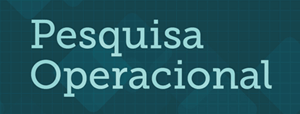Open Access
Pesquisa Operacional
Publicação de: Sociedade Brasileira de Pesquisa Operacional
Área:
Engenharias
Versão impressa ISSN:
0101-7438
Versão on-line ISSN: 1678-5142 Título anterior: Revista Brasileira de Pesquisa Operacional
